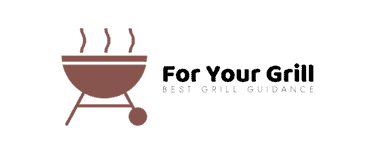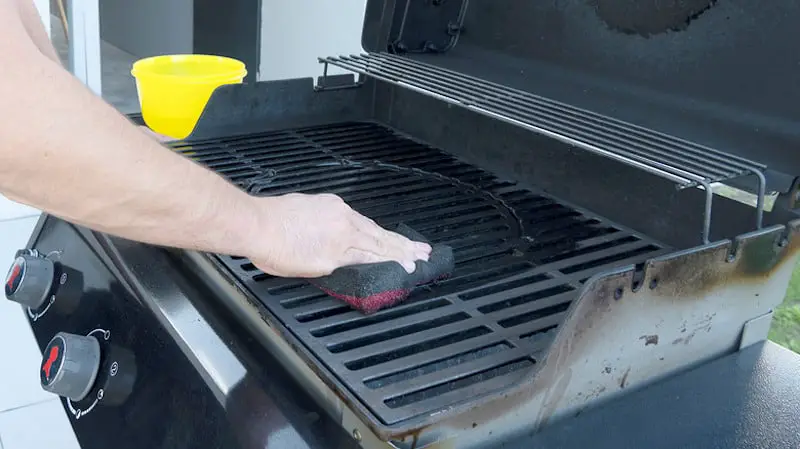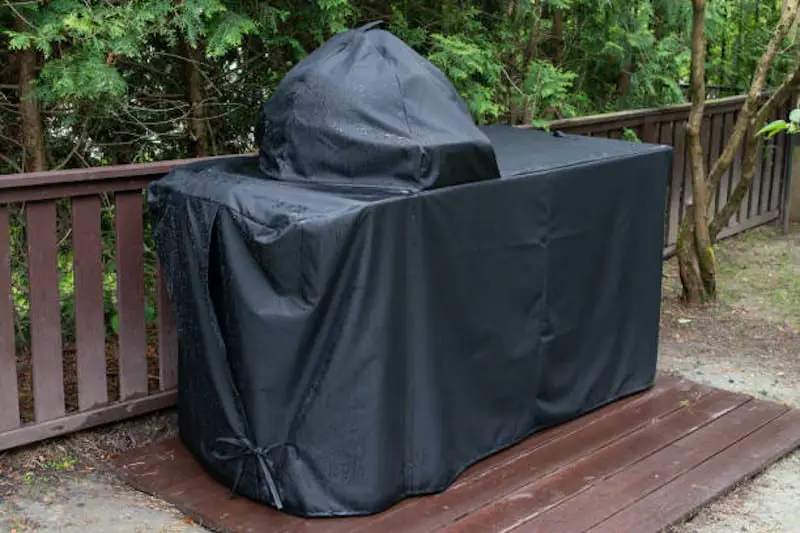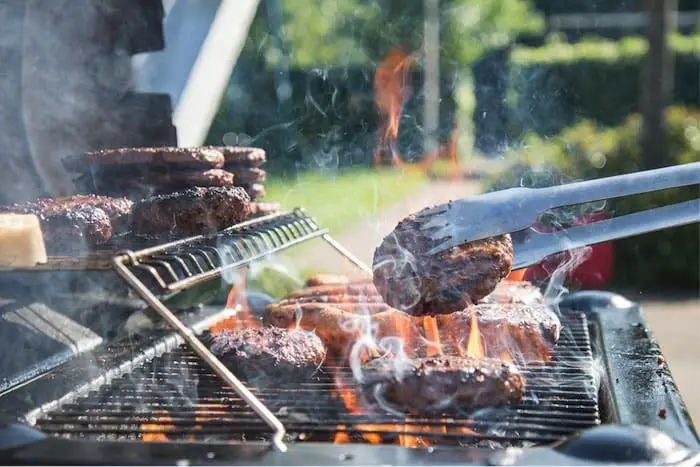
Is there anything as American as grilling burgers? Grilling hamburgers in the backyard takes many of us back to our childhood days when our dads used to dust off the old grill, flip the meat, toast the buns, and ask us whether we wanted cheese on our burger or not.
Although there is something special about sinking your teeth into a hamburger made of fresh meat, sometimes you don’t want to spend extra hours preparing patties before the backyard BBQ. Other times, you just want to enjoy the convenience of frozen burgers.
- However, Are Frozen Burgers Worth It?
- How Long Can Frozen Beef Patties Be Kept?
- Preparing the Burger Patties
- How to Defrost Burger Patties
- Preheating Your Grill
- You May Want to Season Your Frozen Burger
- Grilling Your Frozen Burgers
- Toast the Buns
- Stack your Burger
- What NOT To Do When Grilling Frozen Burgers
- The Wrap Up
However, Are Frozen Burgers Worth It?
Properly prepared burgers can be frozen and then grilled whenever you like. The upside to this is that you can save a lot of time. You can make a lot of burger patties on your day off, and then freeze them for later use. This way, your burger will have a longer shelf life, and they will be available to you to whip out and create a delicious meal in just a few minutes.
With convenience come a few downsides as well. Preparing frozen meat patties is a bit different from grilling fresh ones. Frozen hamburgers may require more time to grill evenly to make sure you don’t end up with raw meat inside and risk falling ill.
However, despite a few shortcomings, there isn’t a huge difference between the taste of a fresh burger and a frozen one. In any case, grilled frozen burgers also taste great.
But before you slam the burgers down on the grill, there are a few key things you need to remember:
- How long can you keep frozen beef patties?
- Is it important to thaw your beef before you grill it?
- What temperature is the safest to properly cook frozen burgers?
- What are the things you need to avoid when grilling frozen burgers?
All of these questions will be answered in the sections below:
How Long Can Frozen Beef Patties Be Kept?
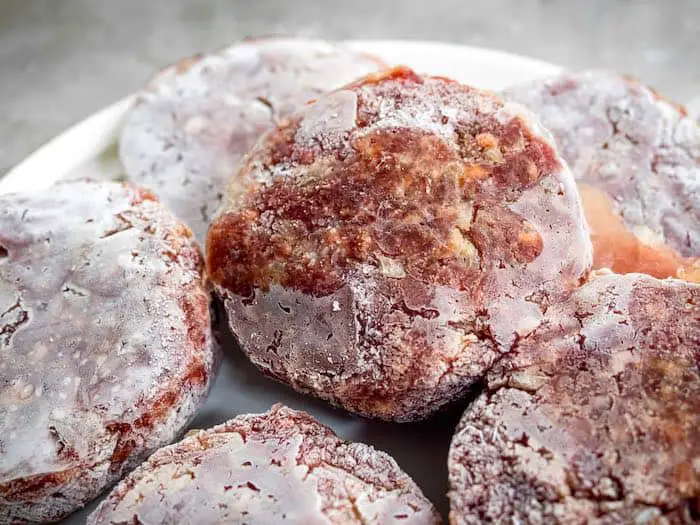
There is no single answer to this question since it largely depends on the storage condition. Raw beef needs to be frozen at all times. Properly frozen beef can maintain the best quality for at least six months; however, it will usually remain safe to eat even after that time.
If you buy frozen beef patties from a supermarket, they will typically carry a label that reads “Best By” or a “Best Before” date. However, unlike an expiration date, this does not denote the safety of the meat. Rather, it is the estimate that the raw meat will remain at peak quality till this time. However, even if the date passes, the meat is still edible.
Frozen beef should be thrown away if it has been taken out of the freezer and left at room temperature for over two hours. This is because there is a high risk of bacterial contamination between 40 degrees Fahrenheit and 140 degrees Fahrenheit.
If your beef patty is kept faithfully in the freezer, but you see some discoloration or dry spots on the meat, this may indicate freezer burn. This does not mean the meat is inedible, though it may be reduced in taste and texture.
Preparing the Burger Patties
Frozen meat patties often get stuck together if they are stacked and frozen. Most commercially available frozen burgers come with paper between them so that the meat patties do not get stuck to each other and lose their form. This paper needs to be removed, and the patties separated before you start to grill them.
If you try to pull them apart, you may break them into pieces. So instead of manhandling them, you need to prise them off gently.
All you need is a slim utensil like a butter knife for the job. Place the knife in between the edges of the meat patty and slide it down. This way, you can get the individual beef patties apart without crumbling them.
If you are having a hard time separating them, let your burgers sit in the open for a few minutes, until some of the first has melted off. This should make your task easier.
Once your beef patties are separated, you need to get the items to grill them. All you need is:
- Your frozen burgers (obviously)
- The grill equipment
- A spatula or a flipper
- Meat thermometer
How to Defrost Burger Patties
If you have time on your hands, you can take out the beef from the freezer and place it in the refrigerator to thaw out. You can also dunk the plastic bag containing the meat in cold water or defrost it in a microwave oven, according to the United States Department of Agriculture.
If you decide to thaw your frozen-hard beef in the fridge, remember that it may require several hours, even up to a whole day, to thaw out properly. Once the beef has thawed, you should consume it within five days.
For quicker defrosting, place the meat inside a plastic baggie and submerge it in cold water. Smaller amounts of beef patties may defrost in an hour or two. Make sure the bag you put the meat in is waterproof. Meat that has been thawed in water should be cooked at once.
Microwave is the quickest way to defrost your burger patties. Place the meat in a microwave container and turn it on for a few minutes. Check the progress every two or three minutes to see if it has properly thawed. Cook it immediately once it is soft.
However, you do not need to thaw beef patties before you grill them. It is safe to grill a frozen burger, though it may take you twice as long to cook it properly.
Preheating Your Grill
If you place your burgers on a cold grill that hasn’t had time to warm up, be prepared for a disaster. The meat patties will get stuck to the grill once the heat is turned on. Worse, your meat will grill unevenly and may not cook all the way through.
Therefore, it is important to preheat your grill to a temperature of 325 degrees Fahrenheit. You can determine the temperature by placing your hand a few inches above the grate for a few seconds. If you can’t do this for more than 6 to 7 seconds, it means the grill has heated sufficiently and is ready to receive your burgers.
Do not overheat the grill unless you want to risk scorching your burgers.
You May Want to Season Your Frozen Burger
In many cases, the burger patty is already seasoned, so you don’t need to add anything else to the meat. However, in the case of unseasoned burgers, some of you may want to add salt, pepper, garlic powder, paprika, or other spices to your burgers to make them more flavorful.
Grilling Your Frozen Burgers

Once the grill is hot enough, line up your burger patties across it. Take care not to let the raw meat touch other food to avoid contamination. Also, wash your hands with soap before and after handling the raw meat. Do not use the meat packaging again, and wash all your utensils that have come in contact with the meat with soap.
Allow your beef patties to grill on one side for five minutes. Then flip them over and let them cook on the other side for three to five minutes. The time your burger patties require to cook may vary depending on the thickness of the patties. Typically, though, it takes you about 25 minutes to perfectly cook the burger patties all the way through. Keep flipping them every three to five minutes during this time.
While you are grilling your burgers, they may result in flare-ups. Unless you want to serve charred burgers to your guests, move your meat patties to the side until the flame goes out. You can also close down the lid of the grill so that the flames die out on their own.
Sometimes, the outside of your meat will turn a beautiful red-brown color even though it may still be frozen in the middle. Many people mistake it to mean the meat is cooked all the way through. Consuming this kind of meat can lead to food poisoning.
To make sure the meat has been perfectly cooked in the middle, use a meat thermometer. For all minced meat, the USDA states the safe internal temperature for consumption is 160 degrees Fahrenheit. If the middle of your beef patty has reached this temperature, it is now ready to be served.
Toast the Buns
Grilling frozen burgers is hard work so when it comes to toasting the buns on the grill, many of us think it isn’t worth the extra trouble. But it totally is. To make sure your bun is crispy on the top and extra soft in the middle, pat it with some melted butter and then grill it for a minute in the grill. The extra effort is totally worth it.
Stack your Burger
Stack your burger with all your favorite condiments like cheese, mayo, lettuce, caramelized onions, mustard, ketchup, mushrooms, pickles, and tomatoes. Of course, the crown jewel is the meat patty you spent so much effort grilling. All these things will further enhance the taste of your mouthwatering burger.
What NOT To Do When Grilling Frozen Burgers
Although grilling frozen burgers isn’t rocket science, there are still many things that you can do wrong:
Mistake #1: Overheating the Grill
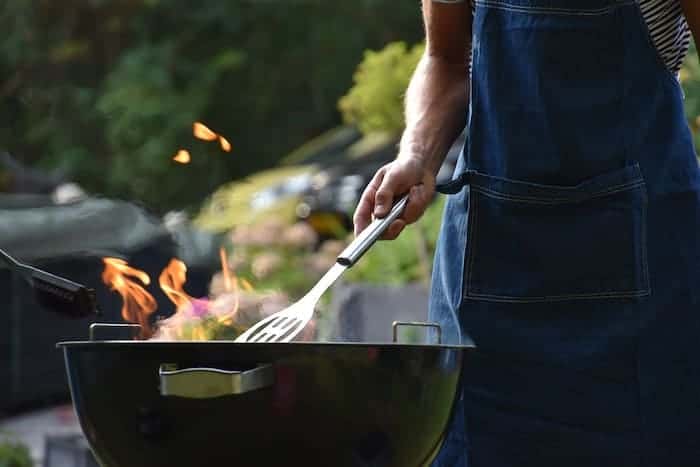
Your grill needs to be 325 degrees Fahrenheit hot; however, sometimes, people go overboard and overheat the grill. This can lead to your burgers sticking fast to the grill. When you try to flip them over, the burger patty will leave a significant chunk plastered to the grill, and you will end up with crumpled and charred black burgers that are still raw from the inside.
How to Fix It: If your grill overheats, you can put out or remove some coals from the grill to allow it to cool down a bit. Additionally, you can place a sheet of aluminum foil on the grill and coat it with a thin layer of vegetable oil. Grilling the burgers on the aluminum may not lend them those mouth-watering grill lines, but your burgers will not burn and will be extra-juicy.
Mistake #2: Grilling Rounded Patties
You may get frozen patties that are rounded and not flat. Although there is nothing intrinsically wrong with them, the rounded shape may prevent the meat from being evenly cooked, especially if it is frozen. This means the rounded part of your burger patties, which is in contact with the grill, may start to burn before the insides have had a chance to cook properly.
How to Fix It: Make sure you pound your burger patties flat before you place them on the grill. To do that, you may defrost them using any of the three methods mentioned above. However, if you do not have time to defrost them, you can flatten them right there on the grill.
Simply let the top of the burger patties thaw out on the grill and then press them down with the spatula until they become flat and even. However, the latter method is not advisable since it will force out the juices of the meat patty. Better to let the meat thaw in a microwave.
Mistake #3: Your Grill Is Dirty
Although cleaning out a grill after a BBQ party can be a chore, it is absolutely necessary. If your grill is covered with residue, it may make your beautiful burger stick fast to the grill.
How to Fix It: Make sure you clean your grill after you are done with the BBQ and before you start cooking. Heat up the grill, so that the residue from the previous grilling session becomes loose. Then get a grill scrape and scrape off as much residue as you can. If your grill is very dirty and is not responding to your scraper, then you need to add some oil to a brush and scrub the offending residue off.
Note to remember: Oil is extremely flammable, so make sure it does not drip down into the flaming coals. To be safe, turn off the grill while you are scrubbing it to avoid any dangerous accidents.
Mistake #4: Relying on the Color of the Meat
Most people think that their burger is cooked all the way through when the color of the meat turns brown all the way to the middle. However, that is not true. Your burger can remain unsafe and raw even if it gets a brown color in the middle — or it may be perfectly cooked even if it looks pink or red.
The color of the meat is determined by several factors other than the color and temperature, including the type of meat you are using. Since a burger patty is a minced meat in a compact form, people who eat it may not realize that the meat has not lost its toughness.
If you eat undercooked meat, it can result in a number of food-borne illnesses caused by bacteria like Salmonella, E. coli, and Trichinella. These can cause vomiting, diarrhea, severe stomach ache, and fever. In worst cases, eating undercooked, contaminated meat can also result in death, particularly of small children, the elderly, and people who have a compromised immune system.
How to Fix It: The only way to ensure your burger is sufficiently cooked is to take care of the time and temperature during the grilling process. As mentioned above, frozen burgers take longer to cook than thawed meat, so you need to be extra careful with them.
- If you are using beef or bison meat, the burger needs to be cooked until the internal temperature reaches 160 degrees Fahrenheit or it reaches 155 degrees Fahrenheit and stays there for 15 seconds or more. When this happens, your burger is safe to be consumed.
- For poultry like chicken and turkey, the meat should be cooked till it reaches 165 degrees.
To make sure this temperature is reached, you will definitely need to invest in a thermometer. A digital thermometer is preferable to a dial-based thermometer. A dial-based thermometer may be unreliable and inaccurate, while a digital thermometer offers more precision. They are also very helpful if you want to avoid overcooking your meat.
Additionally, make sure you check the temperature of the burger patty at various spots, as different spots on a single patty may vary in temperature by as much as 20 degrees. Unless the entire patty has achieved the required temperature, it won’t be OK to eat.
The Wrap Up
Learning how to grill a frozen burger properly isn’t difficult. You just need to get the proper equipment. Fortunately, those aren’t many, and you can easily find them in your kitchen. Plus, you need to take care that it is cooked perfectly. After all, you wouldn’t want your guests to get sick because of you.
So, the next time you have unexpected guests coming by, don’t get flustered. Just take out those burger patties in the freezer and start grilling away.
See Also:
Everything A Grill Master Needs To Know About Alt Meat
Green Mountain Grills Vs Traeger: Which Is Better
How To Secure a Grill to Concrete
